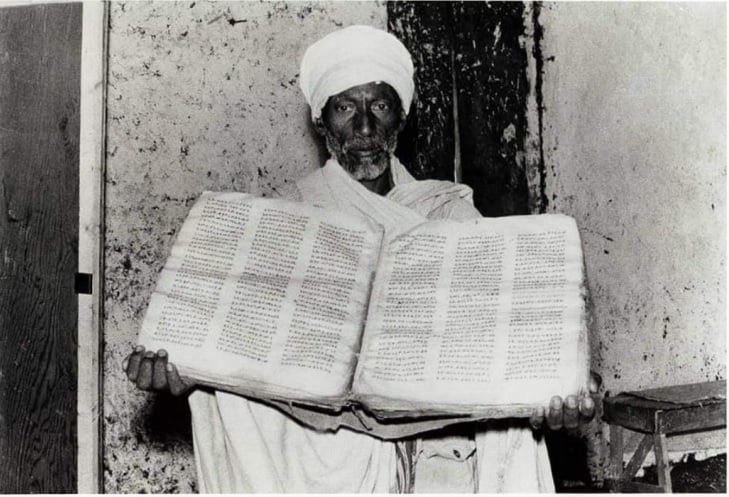From May 4 to May 22, 2025, the Hallelujah Gallery at ANU – Museum of the Jewish People – will showcase a remarkable spiritual treasure from the Beta Israel community: the Oritā of Kes Abba Yitzhak Aysu.
This special exhibition is part of the academic program Guardians of the Oritā, led by the Department of Biblical Studies at the Rosenberg School of Jewish Studies and Archaeology at Tel Aviv University, in collaboration with the Koret Center for Jewish Civilization. The program explores the sacred texts of Beta Israel, focusing both on their ancient manuscripts and the living oral traditions of prayer, translation, and interpretation passed down through generations by the Kessim – the spiritual leaders of Ethiopian Jewry.
The Oritā (ኦሪት) – a Ge’ez word also used in Amharic and Tigrinya – refers to the eight holiest books of the Ethiopian Bible: the Five Books of Moses, along with Joshua, Judges, and Ruth. These texts are preserved in codex form: hand-bound volumes with wooden covers and parchment pages made from goat or sheep skin.
The Oritā on display belonged to one of the most revered spiritual leaders of the community, Kes Abba Yitzhak Aysu (1900–1995), who served in the Tigray region for decades. At age 82, in 1982, he embarked on a perilous journey to Israel with his family – and the Oritā in hand. The path led them through forests, over raging rivers, and across borders, all while facing dangers like robbers, arrests, and the constant threat of losing their sacred texts. Families went to great lengths to protect the Oritā, hiding it among their few belongings, clothing, or even carrying it in secret.
These sacred books – especially the Oritā – remain vital to the Ethiopian Jewish community today, used in celebrations, study, and religious ceremonies.
Kes Abba Yitzhak always believed the Oritā’s true home was in the Land of Israel. In 2017, his family fulfilled that vision by donating the manuscript to the National Library of Israel, preserving it as part of the shared cultural heritage of the Jewish people.
Now, in this special exhibition, the public has a rare chance to encounter this extraordinary manuscript up close and discover the powerful story of the community that carried it across continents – and generations – with unwavering devotion.
May 19, 2025 – Special event in honor of the Guardians of the Oritā Program – click for details
